Que disiez-vous ?
Read the text | Diaporama | Back to gallery
What were you saying? is a set of small series of images forming panoramas referring to one place and date given. Each image is both stand-alone and part of the whole. The series, uniformly blurred, incorporate figures and architecture reduced to a anonymous silhouettes. Away from the photographic effects of Pictorialism, the blur treated as a screen drawn up between the observer and the subject represented, plunges us into an uncertain space where thoughts oscillates between a desire to focus and the acceptance of this vain action. This distancing is both physical and temporal. The observation of the fashions, bodies attitudes, colors or patterns of cars represented, takes us back to a time that is not clearly ours. These panoramas has been made from my personal collection of images. Mainly postcards from the 60s, 70s and 80s in which I take tiny details, often devices or annexes to the main subject of the original image. The fragments of images reconstructs a plausible panorama, but ultimately totally fake and manufactured. A watchful eye can detect in these recomposed landscapes the clues which caused trouble and suspicion: gaps, movements, reversals and partial repetitions of images. Everything seems so mobile in these "possible" landscapes while the frameworks trie to freeze each fragment, to seize a moment. Here the photographic panorama flirts with the cinematographic universe, its travellings and its offscreen. While the gaze sweeps from left to right images, everything seems to be able to mutate and change places in a return to the original plan. The series ' display as well as the deliberation related to one elsewhere or still in memory, even though, paradoxically, each subtitle guest the observer to attest the veracity of a place or a space... which no longer exists.
Que disiez-vous ?
Read the text | Back to gallery
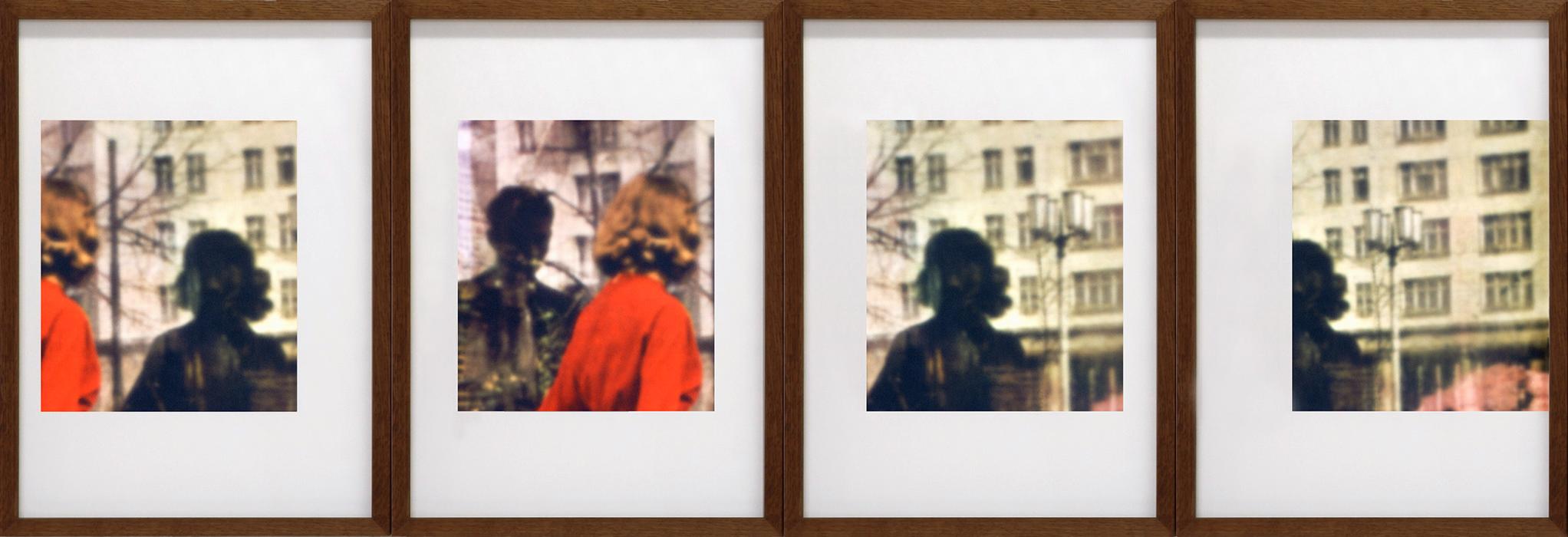
Ensemble formé de 4 images / 60 x 44 cm chaque élément / 2009
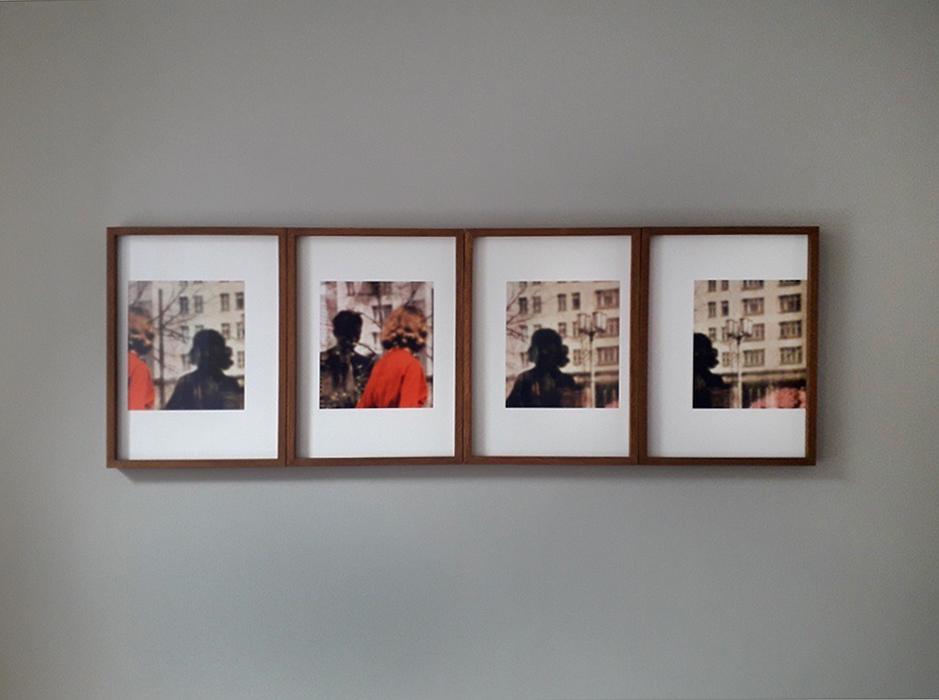
Collection privée - Amiens
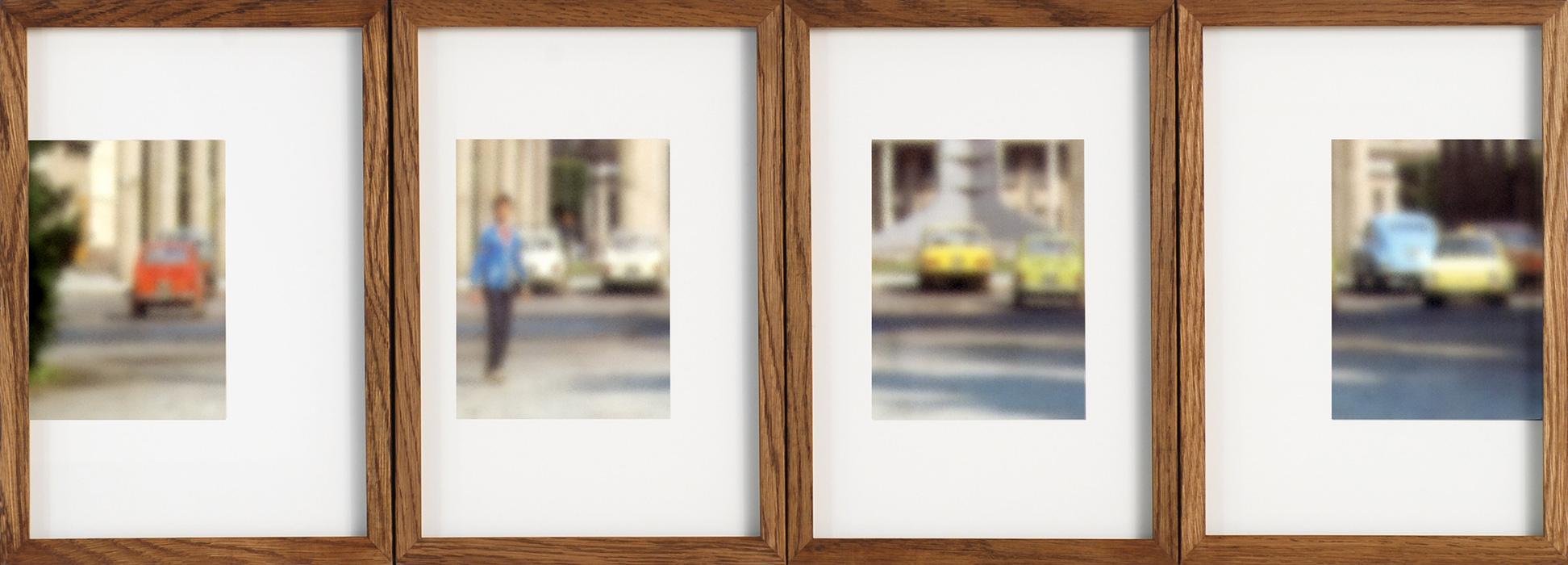
Ensemble formé de 4 images / 31 x 22,5 cm chaque élément
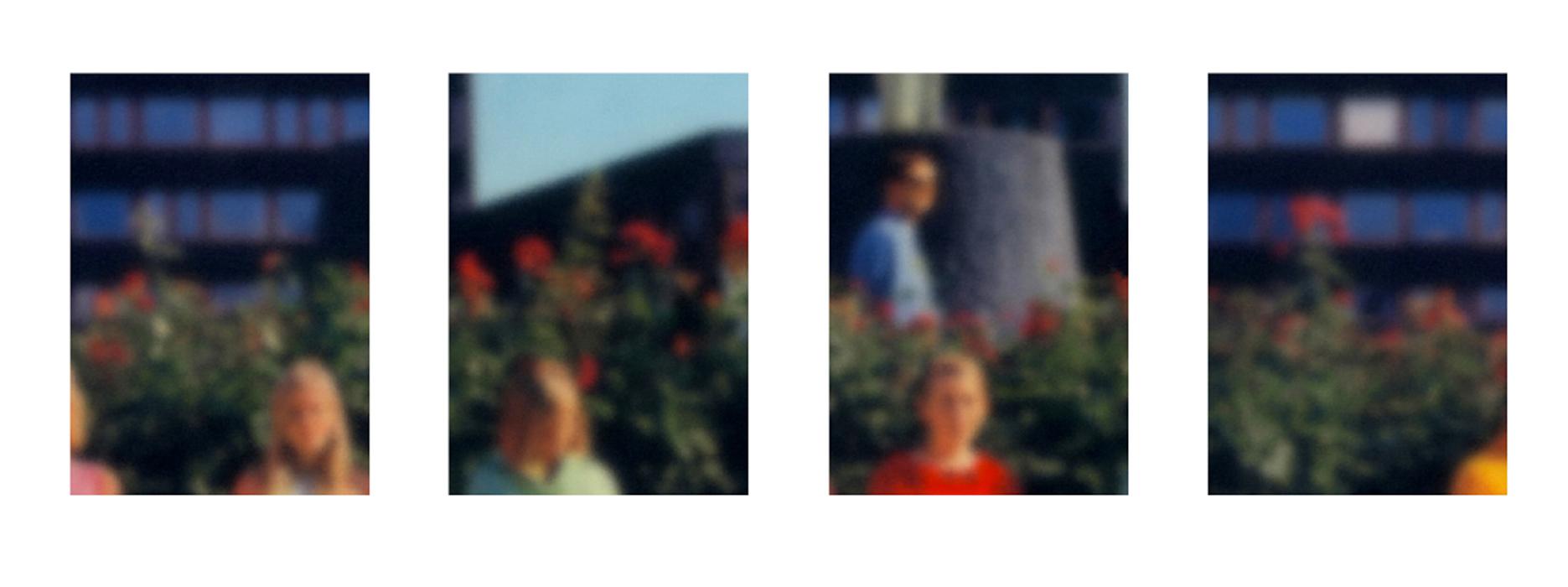
Ensemble de 4 images / 31 x 22,5 chaque élément / 2008
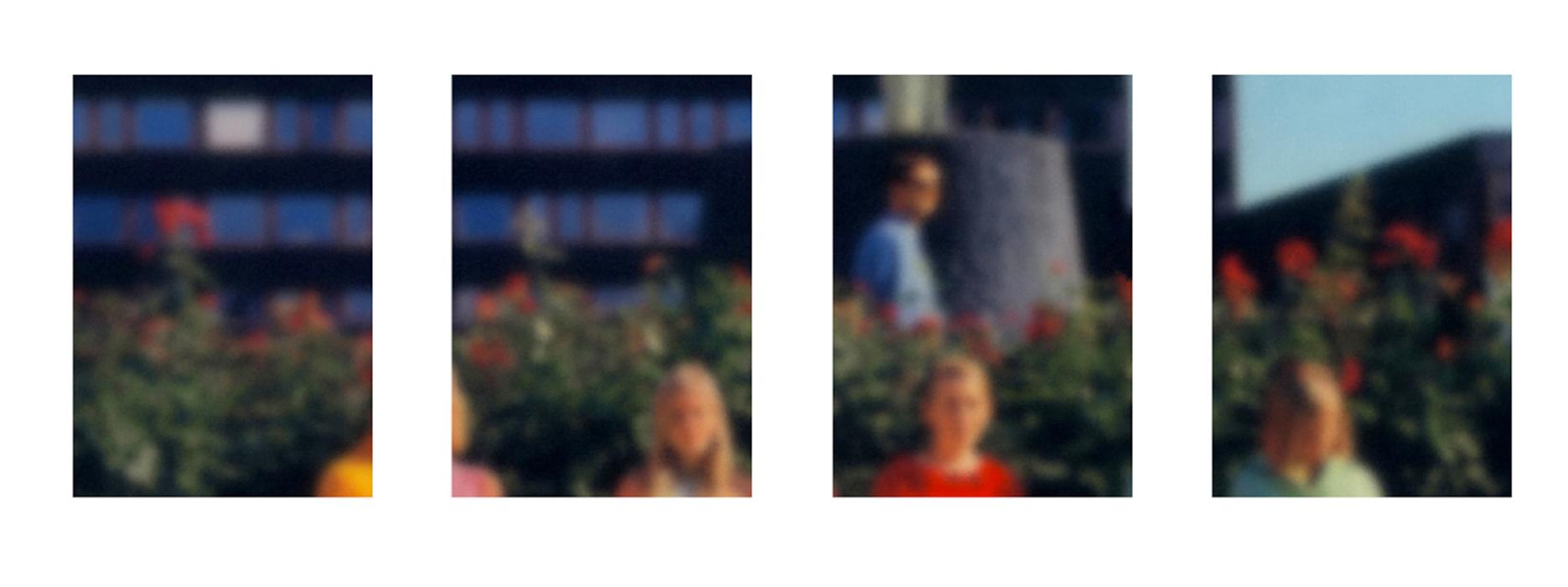
Ensemble de 4 images / 31 x 22,5 chaque élément / 2008
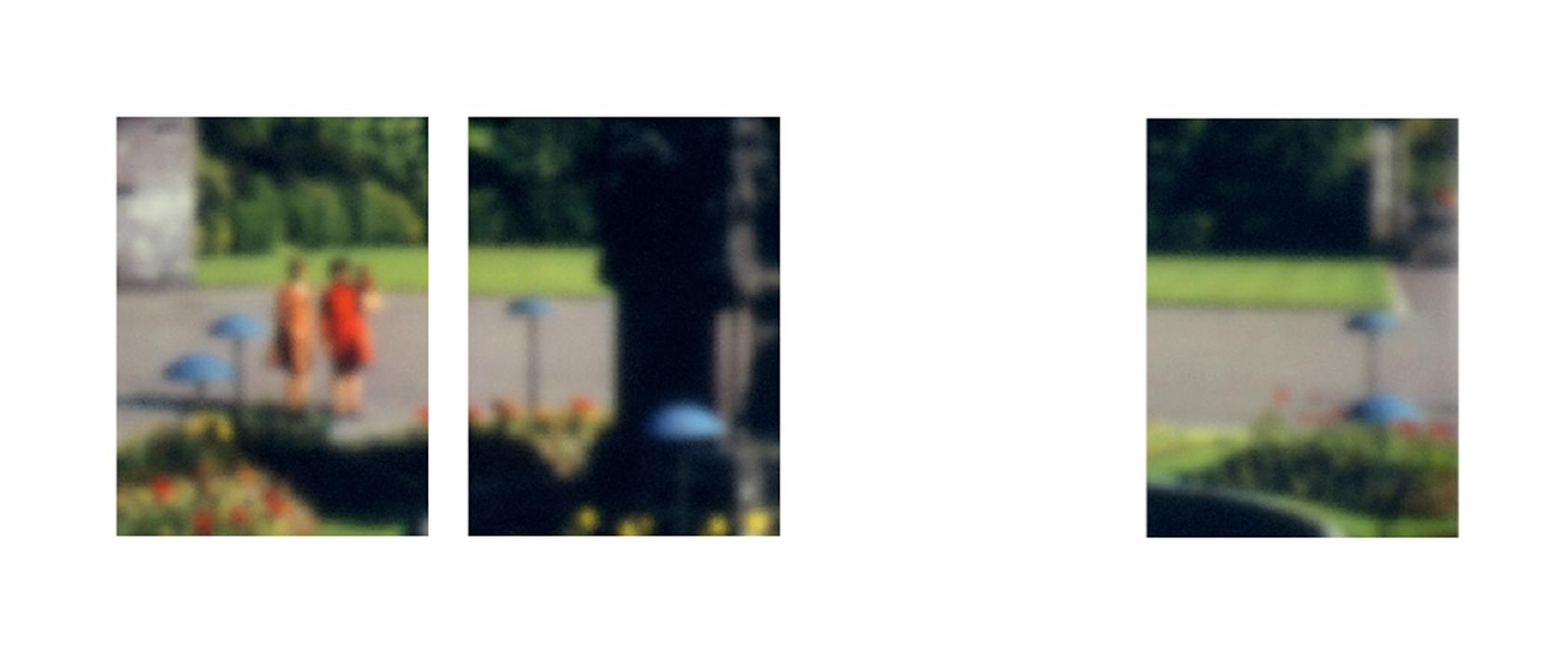
Ensemble formé de 3 images / 31 x 22 cm chaque élément

Ensemble formé de 6 images / 44 x 32 cm chaque élément / 2008

Ensemble formé de 6 images / 44 x 32 cm chaque élément / 2008

Ensemble formé de 6 images / 44 x 32 cm chaque élément / 2008
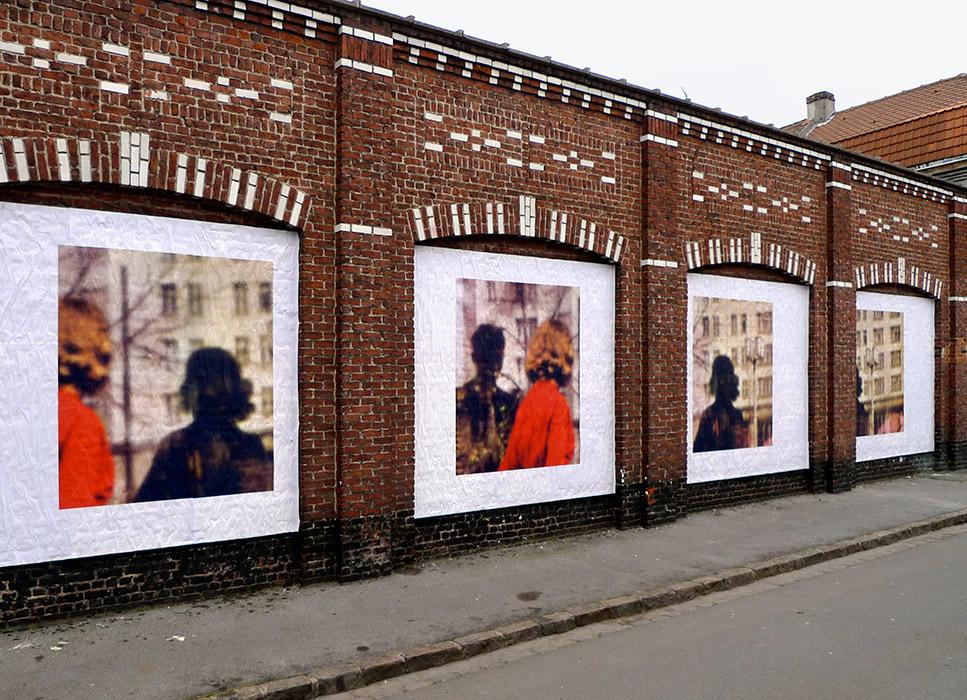
Exposition éphémère dans la ville de La Madeleine, mars 2009 / Impression sur dos bleu 240 x 240 cm
What were you saying? is a set of small series of images forming panoramas referring to one place and date given. Each image is both stand-alone and part of the whole. The series, uniformly blurred, incorporate figures and architecture reduced to a anonymous silhouettes. Away from the photographic effects of Pictorialism, the blur treated as a screen drawn up between the observer and the subject represented, plunges us into an uncertain space where thoughts oscillates between a desire to focus and the acceptance of this vain action. This distancing is both physical and temporal. The observation of the fashions, bodies attitudes, colors or patterns of cars represented, takes us back to a time that is not clearly ours. These panoramas has been made from my personal collection of images. Mainly postcards from the 60s, 70s and 80s in which I take tiny details, often devices or annexes to the main subject of the original image. The fragments of images reconstructs a plausible panorama, but ultimately totally fake and manufactured. A watchful eye can detect in these recomposed landscapes the clues which caused trouble and suspicion: gaps, movements, reversals and partial repetitions of images. Everything seems so mobile in these "possible" landscapes while the frameworks trie to freeze each fragment, to seize a moment. Here the photographic panorama flirts with the cinematographic universe, its travellings and its offscreen. While the gaze sweeps from left to right images, everything seems to be able to mutate and change places in a return to the original plan. The series ' display as well as the deliberation related to one elsewhere or still in memory, even though, paradoxically, each subtitle guest the observer to attest the veracity of a place or a space... which no longer exists.

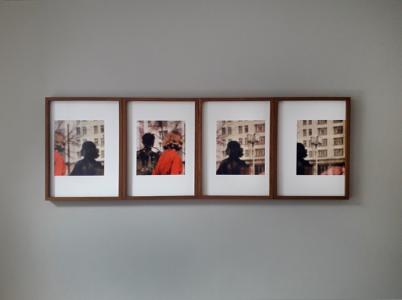
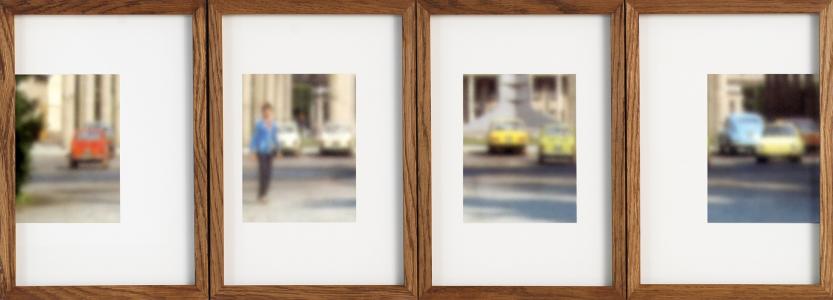
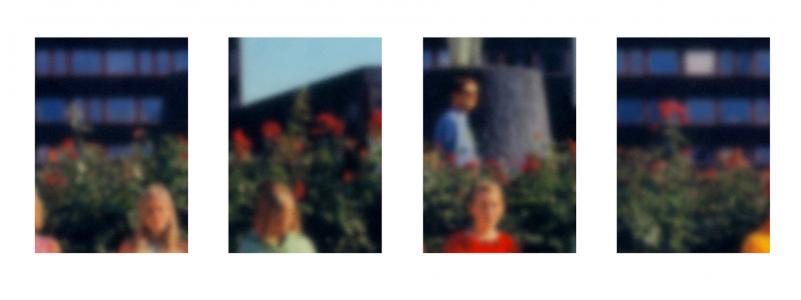

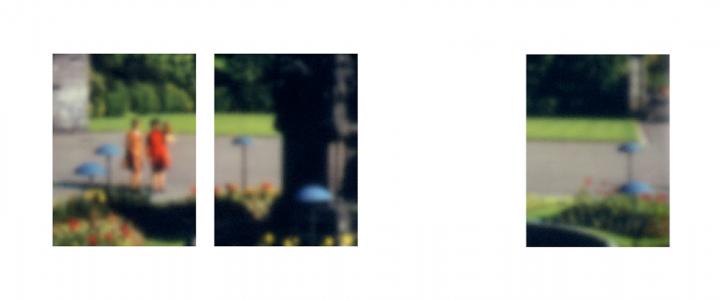



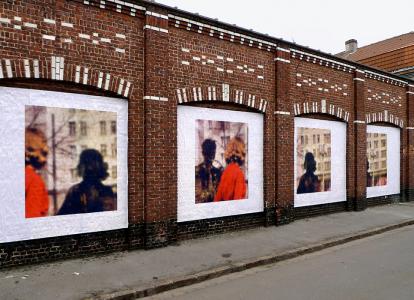
Ensemble formé de 4 images / 60 x 44 cm chaque élément / 2009